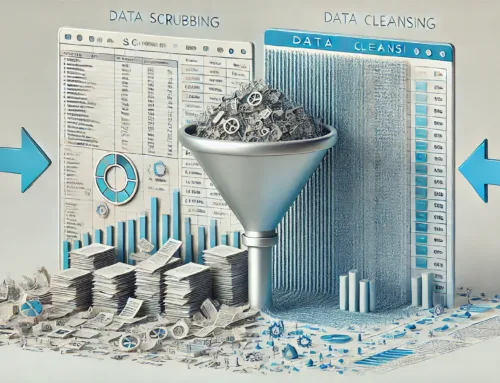In small businesses, up to 25% of data is usually inaccurate or incomplete, impacting decision-making and operational efficiency. To tackle this challenge effectively, understanding the five essential steps for data scrubbing is paramount. By following a systematic approach, you can streamline your data processes, enhance data quality, and unleash the true potential of your business. These steps are not only about cleaning data but also about empowering your organization to thrive in a data-driven landscape.
Cost Efficiency in Data Scrubbing
When considering the cost efficiency of data scrubbing in small businesses, it is crucial to evaluate the impact on overall expenses and the potential return on investment. Data cleansing, through processes like deduplication and normalization, can lead to significant cost savings for small businesses. By removing duplicate or inaccurate data, companies can streamline their operations, improve decision-making, and enhance customer relationships, ultimately resulting in increased revenue and reduced expenses.
Investing in data scrubbing tools or services may initially incur a cost, but the long-term benefits outweigh the upfront expenditure. Improved data quality leads to more accurate analytics, targeted marketing campaigns, and better customer service, all of which contribute to a healthier bottom line. Moreover, efficient data cleansing practices help in complying with data protection regulations, avoiding fines that could be incurred due to inaccurate or outdated information.
Data Quality Improvement Techniques
To enhance data quality in small businesses, implementing effective data quality improvement techniques is essential. Data cleansing techniques play a crucial role in ensuring the accuracy and consistency of your data. By utilizing tools that detect and correct errors, duplicates, and inconsistencies within your datasets, you can improve the overall quality of your information. Regular data cleansing processes help in maintaining clean and reliable data for better decision-making and operational efficiency.
In addition to data cleansing, data enrichment strategies can further enhance the quality of your data. By enriching your existing datasets with additional relevant information from external sources, you can fill in gaps, update outdated records, and ensure that your data remains up to date and comprehensive. This can lead to better insights, improved customer relationships, and more effective marketing campaigns.
Data Strategy for Small Businesses
Implementing a well-defined data strategy is paramount for small businesses seeking to leverage their data effectively. A solid data strategy outlines how data will be collected, stored, analyzed, and utilized to drive business decisions. Small businesses can benefit greatly from a clear data strategy as it enables them to make informed choices based on insights drawn from data analysis.
Data visualization plays a crucial role in a small business’s data strategy. Visual representations of data through graphs, charts, and dashboards make complex information easier to understand and interpret. This aids in identifying trends, patterns, and outliers that may not be apparent from raw data alone.
Moreover, data analysis is at the core of a successful data strategy. Small businesses should employ robust data analysis techniques to uncover valuable insights from their data. By analyzing key performance indicators and metrics, businesses can make data-driven decisions that lead to improved efficiency and profitability. Developing a comprehensive data strategy that incorporates data visualization and analysis is key for small businesses looking to harness the power of their data.
Data Migration Best Practices
As you progress in optimizing your small business’s data strategy, it becomes imperative to consider the seamless transfer of data through effective data migration practices. Data migration best practices involve ensuring the accuracy and reliability of data during the transfer process. By implementing data cleansing benefits, you can eliminate duplicate or outdated information, leading to improved data quality. This process not only enhances the overall efficiency of your data management but also reduces the risk of errors and inconsistencies in your database.
Additionally, maintaining data integrity is crucial in data migration. This involves preserving the accuracy and consistency of data throughout the migration process. By implementing proper data integrity maintenance procedures, such as validating data accuracy and ensuring data completeness, you can safeguard the reliability of your data.
Business Growth Through Data Scrubbing
Amidst the dynamic landscape of small business operations, the role of data scrubbing emerges as a pivotal factor in driving business growth. By effectively cleaning and organizing your data, you can unlock valuable insights that can propel your business forward. Here’s how data scrubbing can contribute to your business growth:
- Improved Customer Retention: Data scrubbing helps in identifying and understanding customer patterns, preferences, and behaviors, enabling you to tailor your products or services to meet their needs effectively.
- Enhanced Market Analysis: Clean data leads to more accurate market analysis, helping you identify trends, opportunities, and potential areas for growth within your industry.
- Better Decision-Making: With clean data at your disposal, you can make informed decisions based on reliable information rather than guesswork.
- Increased Operational Efficiency: Data scrubbing streamlines your processes, reduces errors, and ensures that your business operates smoothly, ultimately leading to growth and success.
Frequently Asked Questions
Can Data Scrubbing Be Automated in Small Businesses?
In small businesses, data scrubbing can be automated for efficiency. By utilizing automated tools, you can save time and resources compared to manual processes. This method increases cost efficiency and ensures accurate data cleansing for optimal performance.
How Often Should Data Scrubbing Be Performed?
You should determine data scrubbing frequency based on the rate of data changes and the criticality of accuracy. Automated scrubbing is efficient for routine tasks, while manual scrubbing may be necessary for complex data. Striking a balance ensures data integrity.
What Are the Common Challenges in Data Scrubbing?
When tackling data quality, you face challenges like inconsistent formats. Time constraints often hinder thorough data scrubbing. Ensuring accuracy amid these obstacles is crucial for reliable business insights and decision-making.
Is Data Scrubbing Essential for GDPR Compliance?
Data scrubbing is crucial for GDPR compliance as it ensures data security and builds customer trust. By cleaning and organizing data effectively, you can maintain compliance, protect sensitive information, and foster trust with your customers.
What Are the Potential Risks of Not Conducting Data Scrubbing?
Without data scrubbing, it’s like navigating a maze blindfolded – accuracy obscured, compliance risks lurking. Inaccurate data can lead to fines, damaged reputation, and missed opportunities. Ensure data cleanliness to safeguard your business.




